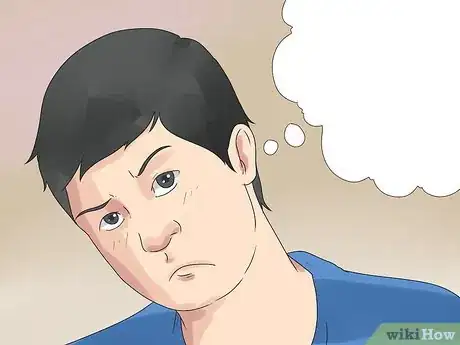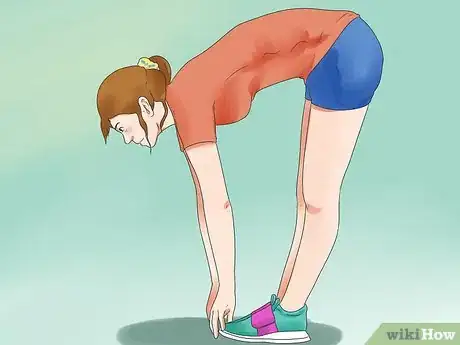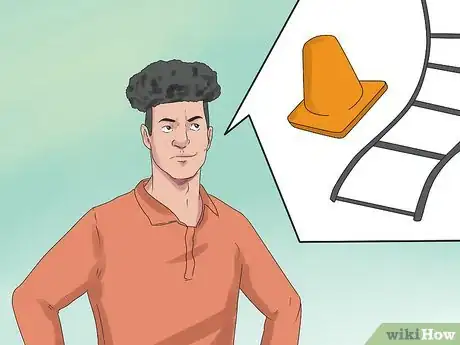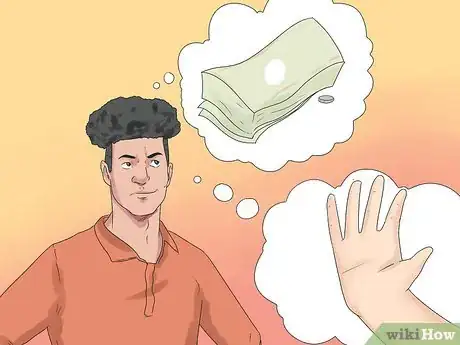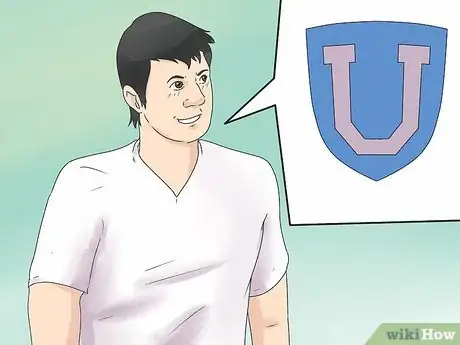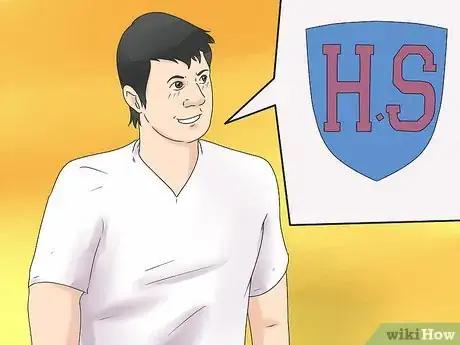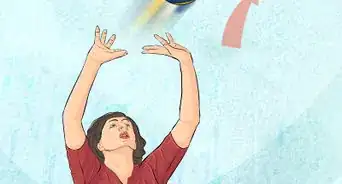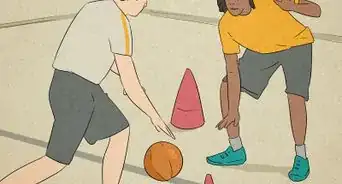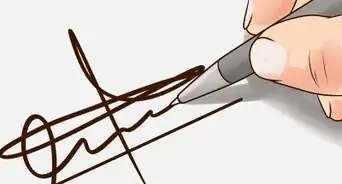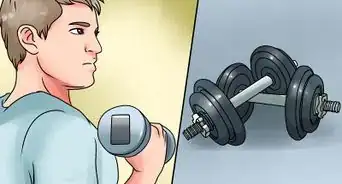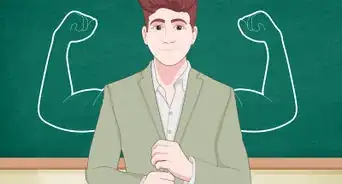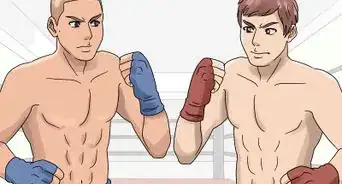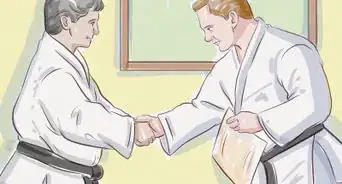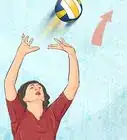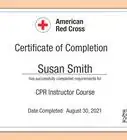wikiHow is a “wiki,” similar to Wikipedia, which means that many of our articles are co-written by multiple authors. To create this article, 15 people, some anonymous, worked to edit and improve it over time.
This article has been viewed 71,587 times.
Learn more...
Coaching volleyball can be a challenging and rewarding experience, especially if you play the sport yourself, or are a passionate follower. There are many levels of volleyball to coach, from professional beach or court volleyball to a recreational co-ed league in the community gym. Regardless of the level, your volleyball players will need to understand the game, practice their serves and returns and engage in conditioning that will keep them quick and flexible on the court. Coach volleyball by effectively communicating with your players, teaching the basics of the game, and leading your team to successful wins in tournaments and games.
Steps
Communicating Effectively With Your Team
-
1Make sure everyone on your team understands the game. The tactics and logistics are necessary, and you may need to teach them if you are coaching beginners.
- Teach the rules. Your players cannot play well if they do not understand the rules of volleyball, and you risk losing points, not to mention games. Make sure your team knows what they can and cannot do, what gets them points and what results in penalties.
-
2Be communicative. Talk to your players supportively, and if you are coaching children, talk to parents openly so they know what is going on at practice.
- Keeping your communication positive rather than competitive will demonstrate that you have the best interests of the players in mind and provide a model of good sportsmanship. This is especially important if you are coaching kids.
Advertisement -
3Coach Socratically. The Socratic method of coaching uses questions to get players to think critically on their own. This may be a slower method, but it yields better results. Ultimately, players need to make high-level decisions themselves when on the court. For example:
- "Carl, what do you think you can do differently to make your serve stronger?"
- "OK, everyone, what do you think we're going to focus on in this drill?"[1]
-
4
-
5When talking to players, use "I" and "we" rather than "you," which puts them on the defensive. For example, "We need to . . ."[4]
- Keep it pithy. You can easily lose your players' attention if you talk too much, too generally. Concentrate your verbal feedback on helping each player focus on what's important in the moment.[5]
Planning Practice
-
1Provide a safe practice environment. Whether you are coaching kids or adults, professionals or amateurs, the physical court needs to be safe. Inspect the practice and competition courts before every practice and match.
- The ground should be free of sharp objects and glass.
- Check what's above the court. There should be 23 feet of overhead clearance. Remove objects like portable basketball goals, lighting fixtures, and tree limbs from the space above the court.
- If you're using a net supported by wires, they should be covered with soft material.
- Players should never grab the net or hang on to supports; this can cause the net to overturn and fall on them.
- To reduce risk of collision, players should "call" the ball to reduce the chance of colliding with another player.
- Having knowledge of first-aid is vital. You should know how to treat common minor injuries like facial cuts, bruises, or minor tendinitis, strains, or sprains.
- Have an emergency contact plan for more serious injuries that require a medical professional.[6]
-
2Plan your training sessions in advance. Planning can be time-consuming, but it is important to figure out in advance what to do during practice.
- Decide what warm-ups, drills, and/or practice games you're going to do.
- Decide how much time to leave for each element.
- Writing out your plans not only gives you something to refer to during practice, but also serves as a reminder of what you've done and what you're going to do.
- Some websites provide downloadable planners for volleyball coaches. These templates might help you get organized.
-
3Start each practice with a light jog for 5-10 minutes. This shouldn't be intense: go from 40% heart rate gradually up to 60%, then follow with a 5-minute recovery period.
-
4Incorporate dynamic stretches. Dynamic stretches are done during movement. Research suggests they are much more effective than static stretches (e.g., touching your toes for 30 seconds) in reducing the risk of injury. Some ideas:
- Straight-leg march (hamstrings and gluteus muscles): Kick one leg straight out in front with the toes flexed upwards, and meanwhile reach the opposite arm to the upturned toes. Lower the leg and do the opposite leg and arm. Repeat 6-7 times.
- Scorpion (lower back, hip flexors and gluteus muscles): Lying on the stomach with arms outstretched and feet flexed so only toes are touching ground, kick right foot upward toward left arm, and then left foot toward right arm. Work slowly, repeat up to 12 times.
- Handwalks (shoulders, core muscles, hamstrings): Stand straight with legs together and then bend over, putting the palms of hands flat on the ground. "Walk" hands out in front until back is almost extended. Keeping legs straight, walk your feet towards hands. Repeat 5 or 6 times.[7]
-
5Teach your players drills. Drills are focused and repetitive movements and plays that players need to be comfortable executing quickly, without thinking. There are three types of drill:
- Skill- and movement-specific: This most common type of drill employs repetition to improve skills like blocking and setting. Use these drills to build good habits and correct bad ones.
- Tactical, systematic and strategic: These drills practice combinations of playing skills and should be incorporated after your players have developed their basic skills. These types of drills are also the time to teach the team how to communicate on the court.
- Conditioning: These drills build strength and stamina. Note that the energy required for conditioning drills may detract from the execution technique. For that reason, keep conditioning-oriented drills separate from skill-specific drills during in-season practice.[8]
- Keep drills focused and fun. Make your practice plan based on skills you want to improve and/or the problems you want to solve. For each drill, set a goal and focus, and communicate these to the players. Knowing what to concentrate on helps them get the most out of the drill.[9]
- Find what works for you. You don't need to constantly incorporate new drills; instead, focus on finding a handful of drills that you and your team enjoy, and use these in rotation, adding variation where necessary.
-
6Play practice games. Divide your players up and have them play against one another. This will give new players a feel of the rhythm to a volleyball game and will allow seasoned players to practice where they need it.
-
7Develop starting lineups and substitution plans. This will be essential when your volleyball team begins competing against other teams. A good coach will be tactical and able to strategize based on the players' strengths and weaknesses.
Finding Opportunities to Coach Volleyball
-
1Decide whether you hope to coach professionally (for payment) or recreationally (volunteer). A large part of this decision involves your qualifications: coaching professionally requires a high level of experience and expertise, while recreational coaching is a less competitive field.
-
2Coach volleyball professionally with a college or university team. The National Collegiate Athletic Association (NCAA) oversees volleyball programs at all division levels in colleges and universities.
- You will need to have years of volleyball playing and coaching experience in order to apply for a job with a college program. The school's athletic director is often responsible for hiring coaches.
-
3Coach at the high school level. Many high school teams have men and women's volleyball teams. Whether these positions are paid or volunteer will depend on the school and the budget.
-
4Look for opportunities to coach youth leagues. Local park and recreation departments and community associations use professional and volunteer coaches for youth programs.
- Check out nationally popular programs such as I-9 Sports, Diversity Youth Sports and We Play Sports.
- Express interest to youth sports leagues that are specific to volleyball, such as the United States Youth Volleyball League or the Youth Volleyball Association. The national leagues can put you in touch with your local chapters.
-
5Join an adult recreational league. If you are better at coaching than at playing, you can coach an adult single sex or co-ed team. Check with your local community college, recreational center or YMCA for leagues and teams.
Community Q&A
-
QuestionIs it okay to get mad when they get it wrong? Or should I tell them what to do right?
 Community AnswerFeelings are always valid, but how you act on them is different. It's okay to feel frustrated about the players doing something wrong, but instead of lashing out or being passive aggressive, try to reinforce what they already know and teach them what they should do instead.
Community AnswerFeelings are always valid, but how you act on them is different. It's okay to feel frustrated about the players doing something wrong, but instead of lashing out or being passive aggressive, try to reinforce what they already know and teach them what they should do instead. -
QuestionIs it possible to coach even if you are not a player but you know the rules of the game?
 DonaganTop AnswererIt would be difficult. Knowing the rules helps, of course, but it's not the same as having plenty of experience as a player. Good coaching is about more than just teaching and enforcing the rules; you need to understand what it's *like* to play, what difficulties players are likely to encounter and how to resolve them, not to mention be able to demonstrate things and practice with the team sometimes.
DonaganTop AnswererIt would be difficult. Knowing the rules helps, of course, but it's not the same as having plenty of experience as a player. Good coaching is about more than just teaching and enforcing the rules; you need to understand what it's *like* to play, what difficulties players are likely to encounter and how to resolve them, not to mention be able to demonstrate things and practice with the team sometimes.
References
- ↑ http://changingminds.org/techniques/questioning/socratic_questions.htm
- ↑ http://www.strength-and-power-for-volleyball.com/how-to-coach-volleyball.html
- ↑ http://www.strength-and-power-for-volleyball.com/how-to-coach-volleyball.html
- ↑ http://www.strength-and-power-for-volleyball.com/how-to-coach-volleyball.html
- ↑ http://www.strength-and-power-for-volleyball.com/how-to-coach-volleyball.html
- ↑ http://www.momsteam.com/sports/tips-to-prevent-volleyball-injuries#ixzz3JLnkHUhQ
- ↑ http://www.momsteam.com/health-safety/general-safety/injury-prevention/dynamic-stretching-recommended-as-part-sports-warm-up#ixzz3JLs20AG5
- ↑ http://www.strength-and-power-for-volleyball.com/volleyball-drills.html
- ↑ http://www.strength-and-power-for-volleyball.com/volleyball-drills.html




